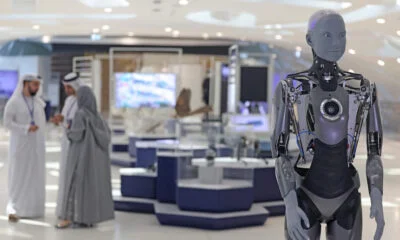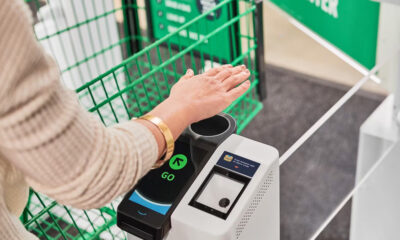News
Virgin Hyperloop Concept Video Provides A Peek At The Future Of Transportation
If the idea of traveling at speeds up to 670 mph while sitting inside a futuristic pod propelled by strong electromagnets through an airless tube sounds like a cool sci-fi concept to you, then you should watch the latest video published by Virgin Hyperloop.
The video shows how the Hyperloop concept, which was first proposed in 2013 by Elon Musk, might enable a faster, greener, and more cost-efficient mode of travel in a not-so-distant future — at least in the United Arab Emirates.
Unlike many existing train stations, the one from which the passengers in the video board their pods is clean, bright, and inviting. The pods themselves echo the same optimistic vision of the future, where traditional materials and high-end technology work in unison to create a more pleasant transportation experience.
Every passenger seat is equipped with wireless charging, and translucent LCD screens that double as dividers between individual rows of seats show the remaining travel time and current speed. Smaller info displays inform passengers about Wi-Fi and toilet availability, both of which are guaranteed to come in handy during longer trips.
When will first passengers be able to enjoy this exciting new mode of transportation? Sometime in 2030, most likely. Virgin Hyperloop, which receives financial backing from Dubai’s regime-backed DP World, must first receive its safety certification before it is allowed to operate in the United Arab Emirates.
So far, Virgin Hyperloop has successfully completed its first passenger test, during which the pod accelerated to around 100 mph. That’s a fairly impressive speed, but there’s no denying that the company has a long way to go before it hits 670 mph.
Also Read: Netflix Is Introducing Sleep Timer Functionality On Android
When it does, its Hyperloop system could be a game-changer for all people who commute long-distances on a regular basis. Jay Walder, CEO of Virgin Hyperloop, said that the company’s Hyperloop system must be affordable for people to use. As such, prices should be much closer to driving than flying thanks to the fact that multiple pods (each carrying up to 28 passengers) can travel inside the same tube mere milliseconds apart.
News
Mamo Completes $3.4M Funding Round To Enhance Fintech Services
The startup will use the influx of cash to expand into Saudi Arabia and across the wider GCC while improving its product offering.

UAE-based fintech Mamo has announced the completion of a $3.4 million funding round that will help the startup extend its market presence and improve its product offering. Investors included 4DX Ventures, the Dubai Future District Fund and Cyfr Capital.
Mamo’s platform offers “payment collection, corporate cards and expense management” to help small and medium-sized businesses consolidate and streamline their operations. With the latest influx of capital, Mamo will further develop its comprehensive suite of services and begin testing its product lines in Saudi Arabia, further extending its footprint across the GCC.
Imad Gharazeddine, co-founder and CEO of Mamo, stated: “We’ve been in the market for a while now and are incredibly proud of what our team has achieved. The holistic and expansive nature of our product offering has helped us continue to grow sustainably. This additional funding will allow us to reach our medium-term goals even faster. The support from new and existing investors is a testament to our strong expertise and the ability to deliver on our customer promise”.
Daniel Marlo, General Partner of lead investor 4DX Ventures, added: “We have immense trust in Imad’s vision, leadership and Mamo’s innovative approach to provide a user-friendly and comprehensive financial solution for SMEs that makes financial management more accessible and efficient. We are proud to partner with them and support their mission”.
Also Read: A Guide To Digital Payment Methods In The Middle East
Amer Fatayer, Managing Director of Dubai Future District Fund’s investment team, also commented: “Mamo’s localized product lines serve as an infrastructure for SME payments and spend management in UAE, a segment that is underserved by the country’s current banking infrastructure. The team has taken a product-first approach to consolidating SMEs’ financial journeys and building a fintech solution deeply embedded in a business’s core operations”.
To date, Mamo has raised around $13 million in investment funding and now boasts a team of 30 people. The company’s intuitive financial services platform has allowed over 1,000 businesses to consolidate their financial operations and significantly reduce payment fees.
-

 News4 weeks ago
News4 weeks agoAmazon Prime Day 2024: Get Ready For 6 Days Of Amazing Deals
-

 News4 weeks ago
News4 weeks agoSamsung Unpacked 2024: What To Expect From The July 10 Event
-

 News4 weeks ago
News4 weeks agoCoursera Report Shows Surge In UAE Interest In AI Upskilling
-

 News4 weeks ago
News4 weeks agoMeet Dubai’s Groundbreaking Smart Robot Delivery Assistant













